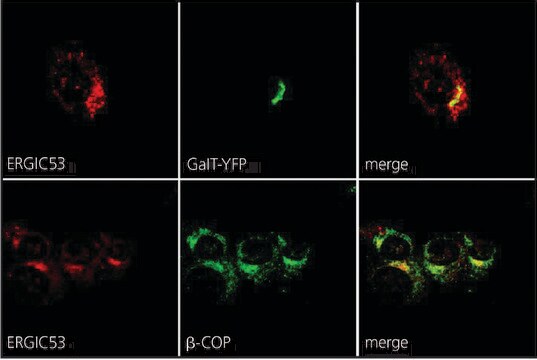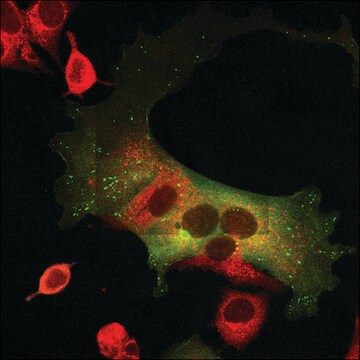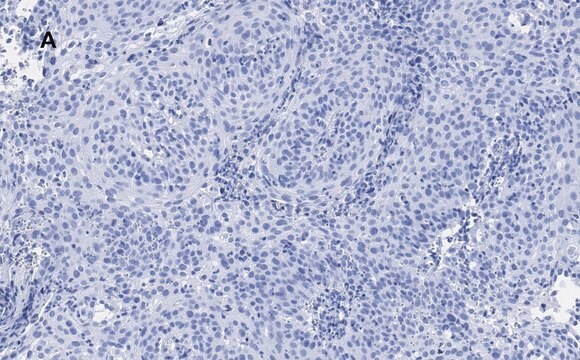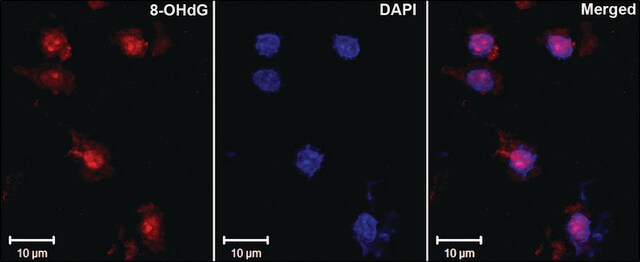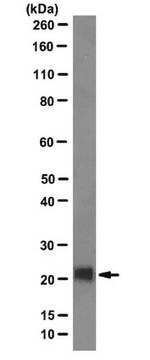SAB4200585
Anti-ERGIC-53 antibody, Mouse monoclonal
clone ERGIC-3, purified from hybridoma cell culture
Sinónimos:
Monoclonal Anti-ER-Golgi intermediate compartment 53 kDa protein, Monoclonal Anti-ERGIC-53 antibody produced in mouse, Monoclonal Anti-ERGIC53, Monoclonal Anti-F5F8D, Monoclonal Anti-Gp58, Monoclonal Anti-Intracellular mannose-specific lectin MR60, Monoclonal Anti-LMAN1, Monoclonal Anti-Lectin mannose-binding 1
About This Item
Productos recomendados
origen biológico
mouse
Nivel de calidad
conjugado
unconjugated
forma del anticuerpo
purified from hybridoma cell culture
tipo de anticuerpo
primary antibodies
clon
ERGIC-3, monoclonal
Formulario
buffered aqueous solution
mol peso
antigen ~58 kDa
reactividad de especies
mouse, human, rat
concentración
~1 mg/mL
técnicas
immunoblotting: 1-2 μg/mL using whole extracts of human HeLa cells.
isotipo
IgG1
Nº de acceso UniProt
Condiciones de envío
dry ice
temp. de almacenamiento
−20°C
modificación del objetivo postraduccional
unmodified
Información sobre el gen
human ... LMAN1(3998)
mouse ... Lman1(70361)
rat ... Lman1(116666)
Descripción general
Inmunógeno
Acciones bioquímicas o fisiológicas
Forma física
Cláusula de descargo de responsabilidad
¿No encuentra el producto adecuado?
Pruebe nuestro Herramienta de selección de productos.
Código de clase de almacenamiento
10 - Combustible liquids
Punto de inflamabilidad (°F)
Not applicable
Punto de inflamabilidad (°C)
Not applicable
Elija entre una de las versiones más recientes:
¿Ya tiene este producto?
Encuentre la documentación para los productos que ha comprado recientemente en la Biblioteca de documentos.
Nuestro equipo de científicos tiene experiencia en todas las áreas de investigación: Ciencias de la vida, Ciencia de los materiales, Síntesis química, Cromatografía, Analítica y muchas otras.
Póngase en contacto con el Servicio técnico